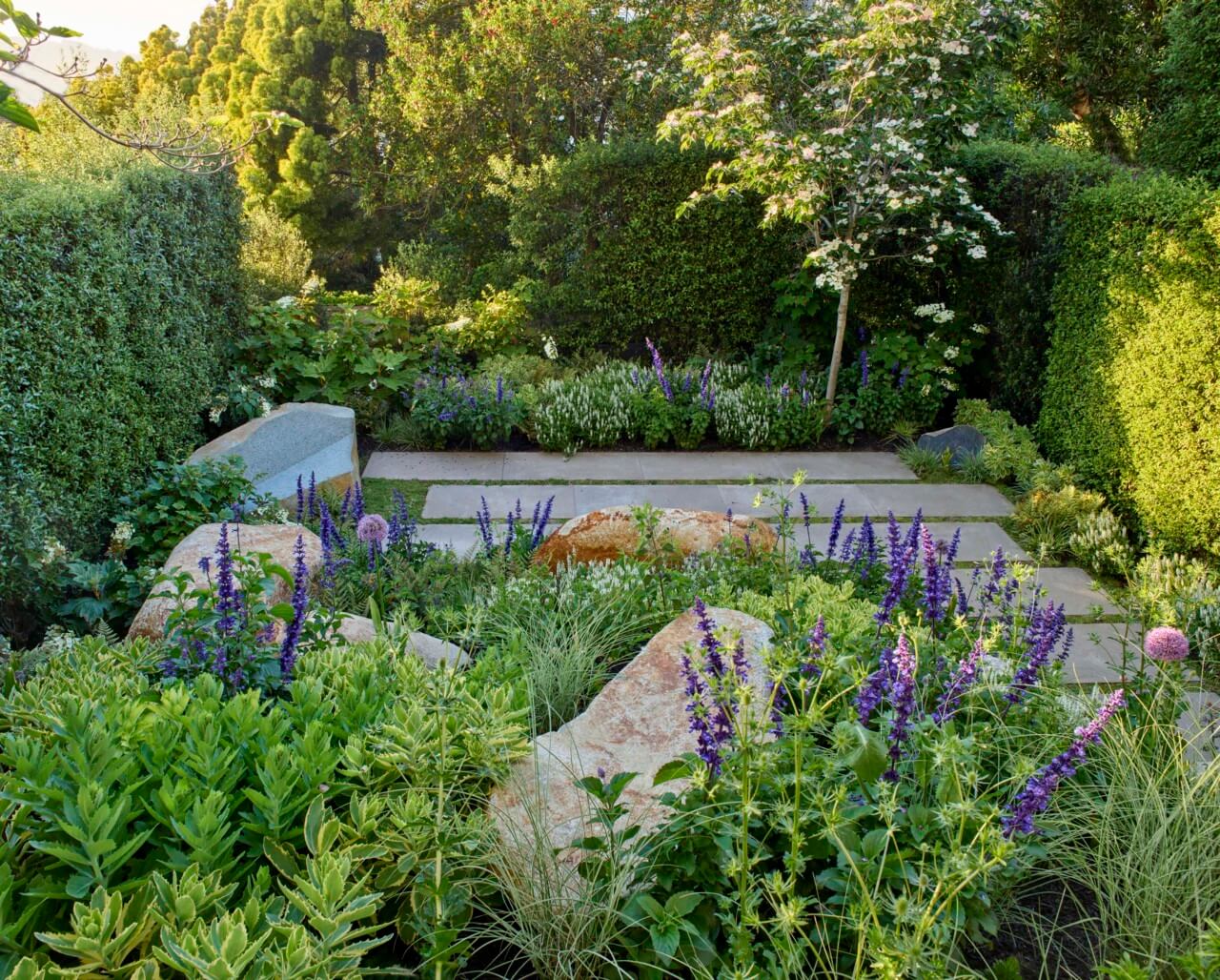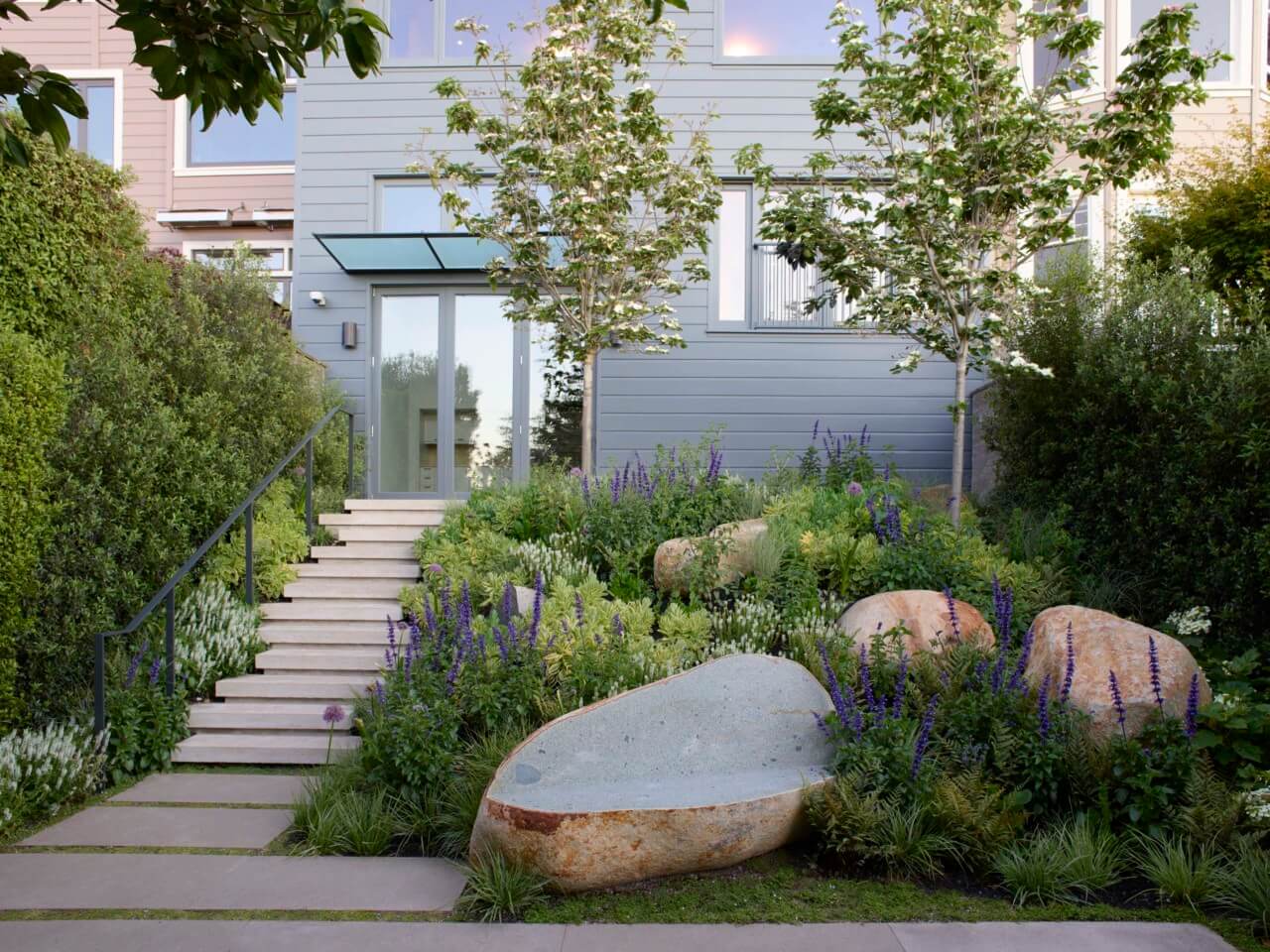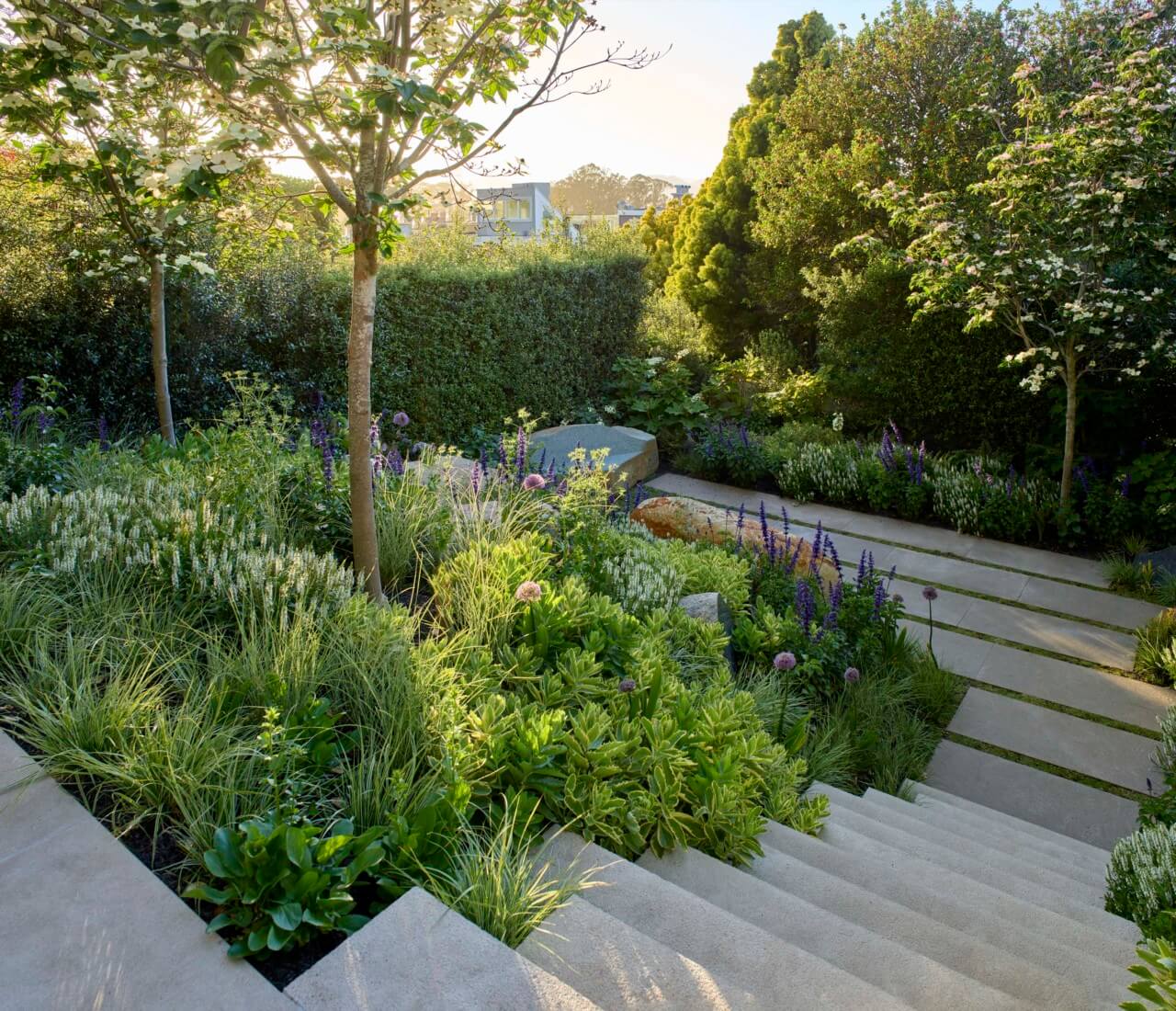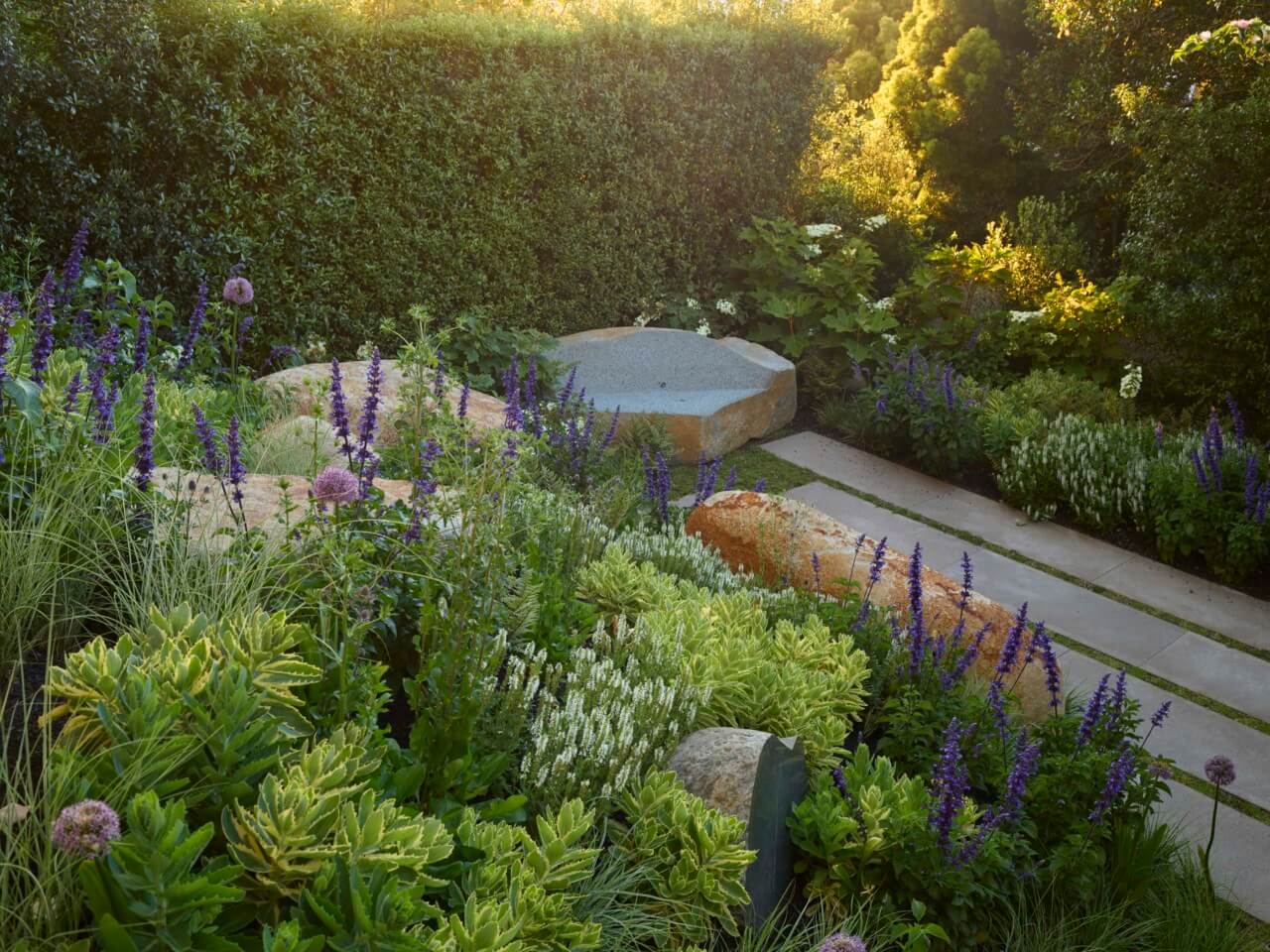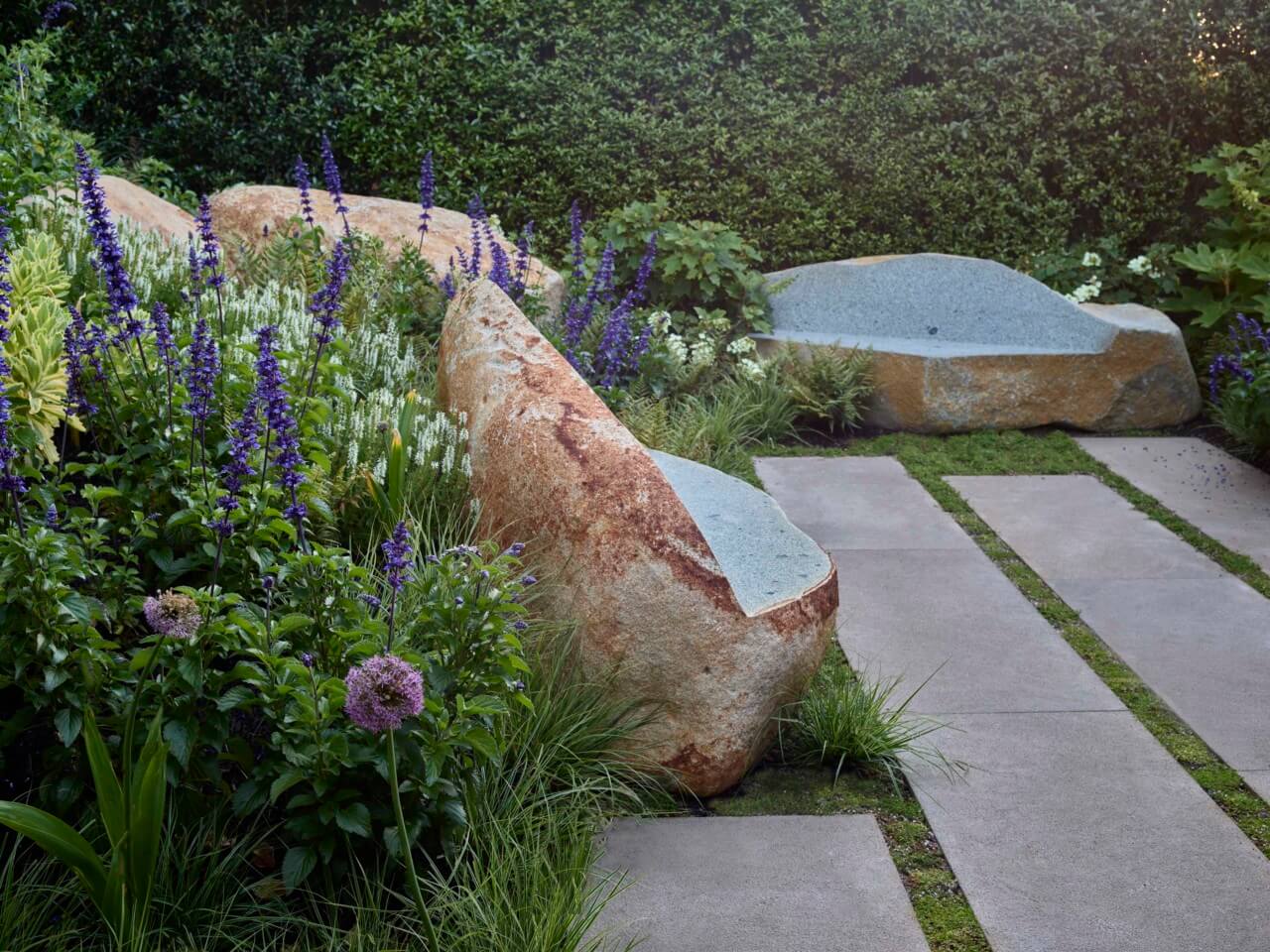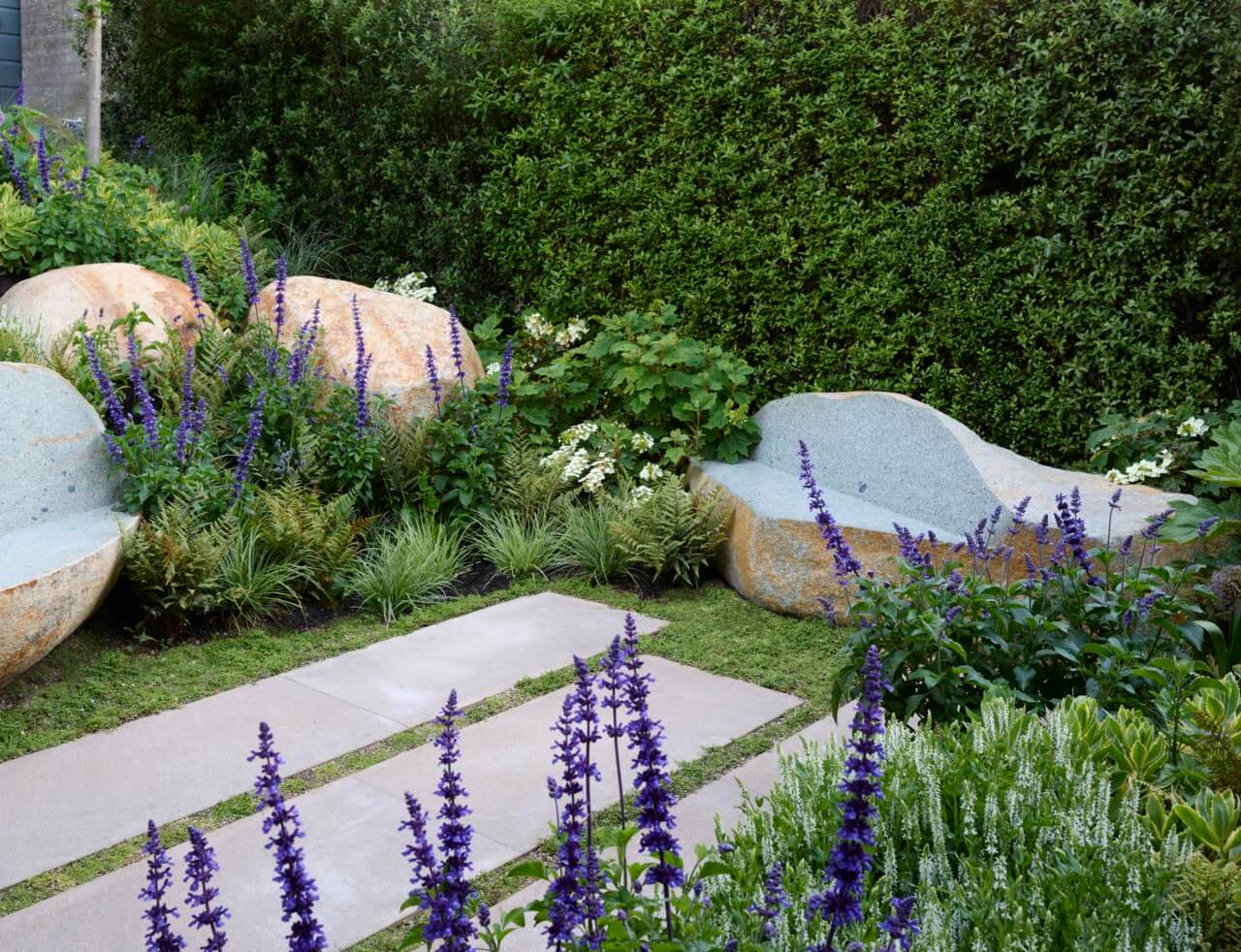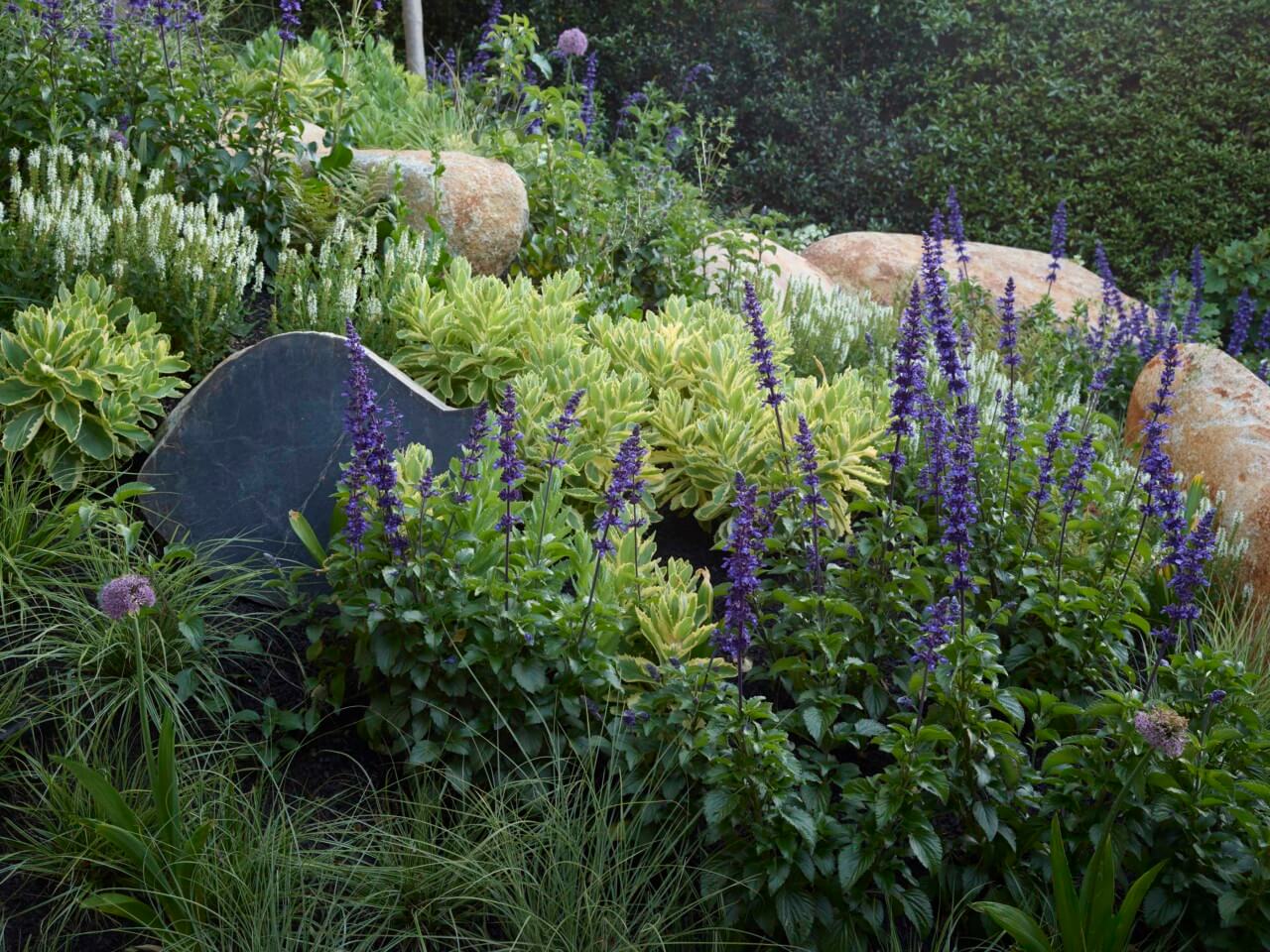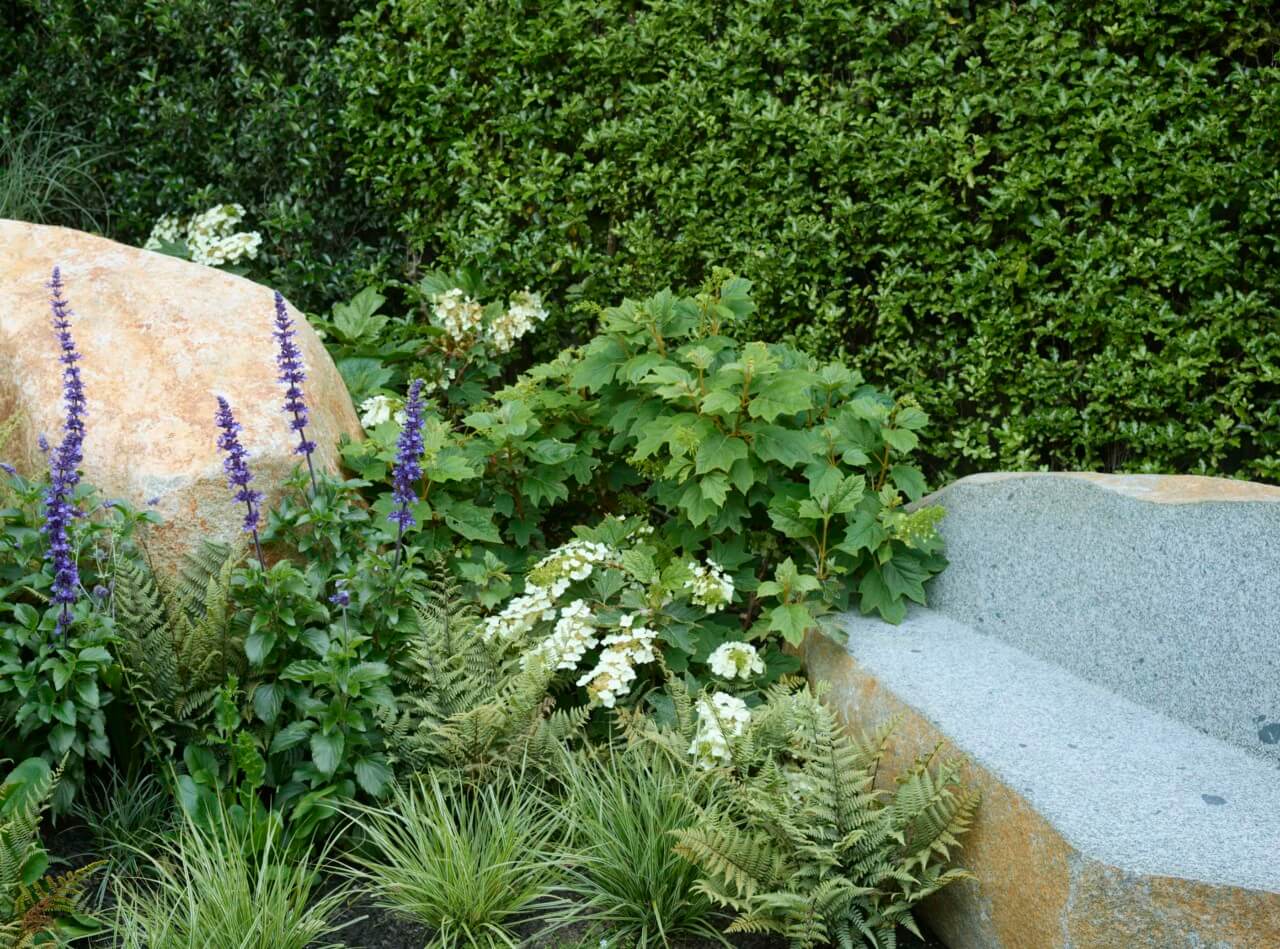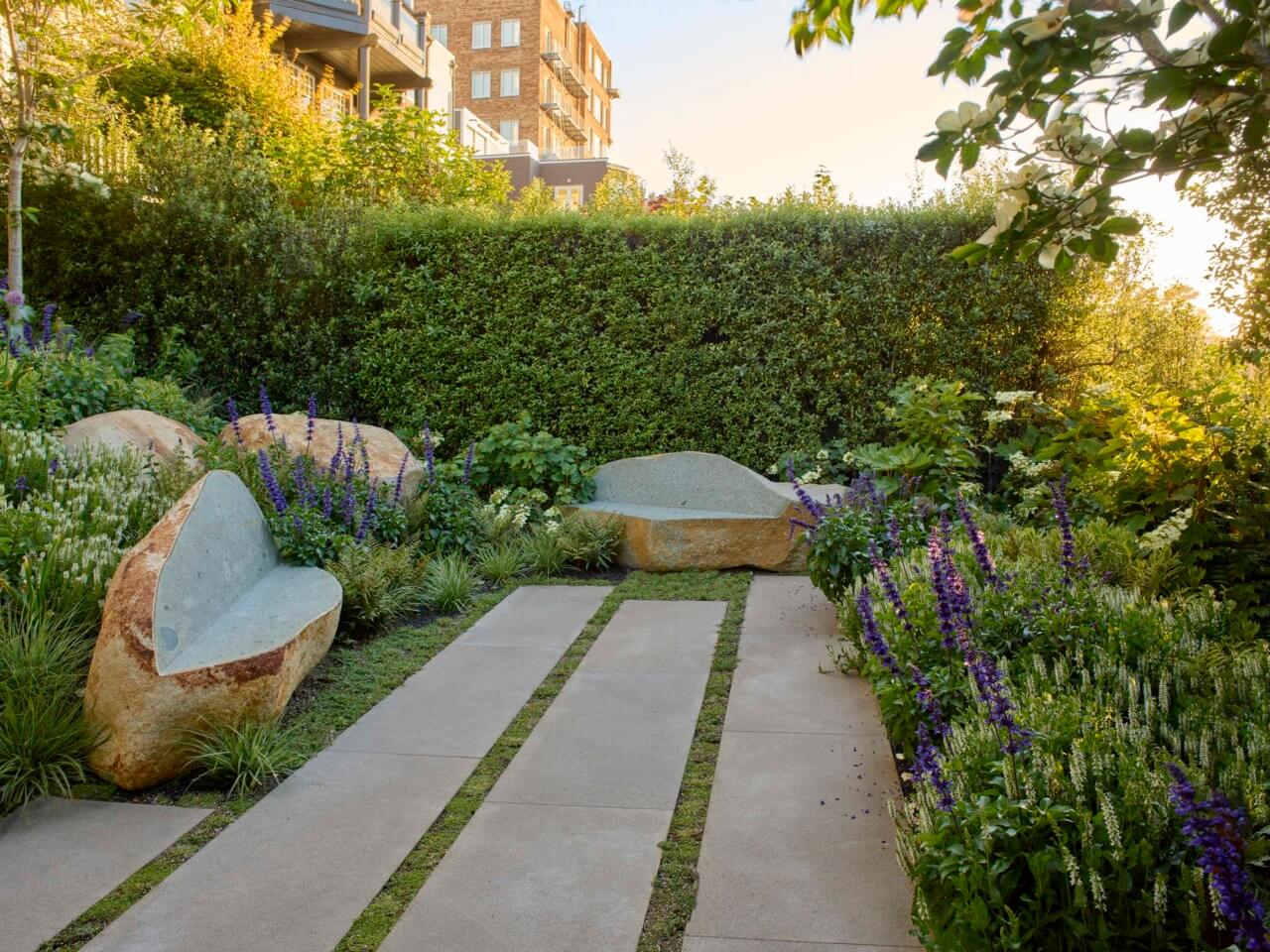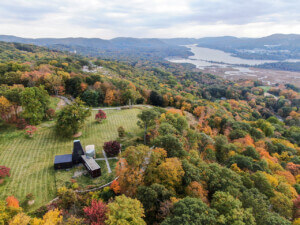In California, the ideal of indoor-outdoor living has never loosened its hold. Even with ever-pressing environmental issues and ballooning population growth, the dream of a seamless integration between inside and out continues to captivate designers and clients alike. Three recent landscape projects in the Bay Area demonstrate this fact, while also illustrating the particularities of today’s California lifestyle.
From a private residential garden in San Francisco’s Pacific Heights to an infill landscape for a multifamily housing development in the heart of Silicon Valley to a multi-acre campus for a tech company in Santa Clara, these three projects vary widely in scale and scope. Nevertheless, common threads emerge. Besides an overarching concern for water conservation, all three landscape designers explored ways to move beyond the formal, controlled, generic landscapes of the past and toward a more regional approach highlighting native plants and local ecology. Instead of lawns and plantings that locate users in an anonymous “anywhere,” landscape design in the Bay Area today endeavors to create a specific “somewhere.” This effort takes today’s environmental realities seriously while still finding joy in the specialness of California living.
These landscape projects, which appeared as case studies in the October/November 2022 print edition of The Architect’s Newspaper, will run online as a three-part series, beginning with Dogwood Garden.
This residential viewing garden in San Francisco’s Pacific Heights neighborhood is small but mighty. Designed by local firm Surfacedesign, the 1,500-square-foot garden replaced a previously underused rear yard that was dominated by a struggling lawn in deep shade from an oversize beech tree. The new design embraces informality, with a staggered limestone staircase leading to a lower terrace and seating area. All around, a native planting palette defined by subtle variegation brings a luminous quality to the garden, which is visible from the home’s upper floor and exterior deck. “More and more, there is a move away from tamed, manicured landscapes towards something more connected to a larger ecological condition,” Surfacedesign partner Roderick Wyllie told AN. “There is an impulse for the garden to be legible as a part of nature.”
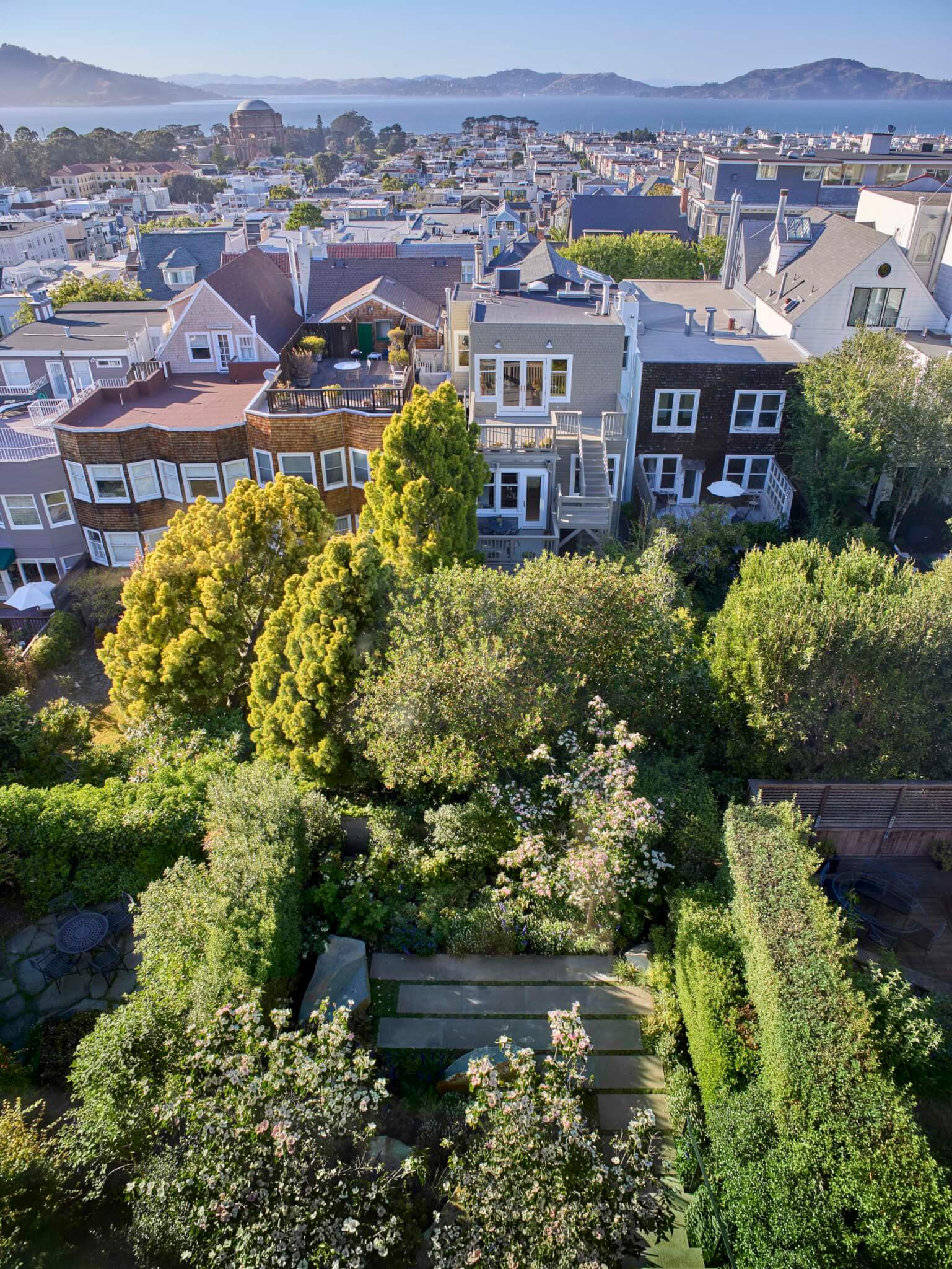
A pair of pink dogwoods punctuate the top of the garden, which gently slopes down a hill planted with allium bulbs, salvia, veronicas, thistles, ferns, and oakleaf hydrangeas. “Often, the California vernacular has a more informal, meadowy character,” explained Surfacedesign principal Michal Kapitulnik. A pair of Sonoma fieldstones read as boulders from above, completing the visual reference to California’s woodland hillsides. Slicing angled wedges from the fieldstones and polishing the cutaway sections allows them to function as seating.
The lush plantings welcome humans and animals alike. Butterflies, bees, and hummingbirds gravitate to the space, which also functions as a pollinator garden. Although Surfacedesign did not impose an overt ecological program, the character of the planting palette establishes the garden as a microhabitat for local fauna. “This is a living garden and a space for living,” Wyllie said.
Landscape architect: Surfacedesign
Location: San Francisco
Architect: MEMarchitecture
Interior design: Studio Volpe
General contractor: Dowbuilt Landscape contractor: Siteworks
Lauren Gallow is a Seattle-based writer and editor covering art, architecture, and design with bylines in AN Interior, Dwell, Metropolis, Interior Design, and Cereal, among other publications.






